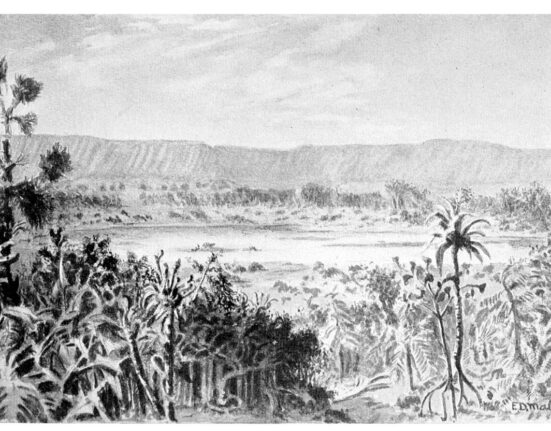In January of 897 AD, the Basilica San Giovanni Laterano in Rome bore witness to one of the strangest “trials” in human history. Referred to as either the Cadaver Synod or Synodus Horrenda, this event remains a dark blemish upon the history of the papacy as well as that of Rome itself. The reason that this trial is remembered as a gruesome farce is simple: the man on trial had been dead for just a few months shy of a year. (1)
More History to Read: The Incredible True Story of the Birdman of Alcatraz
The Late Pope Formosus
Pope Formosus was born in 816 and is presumed to have originally hailed from Rome. In 864, Formosus was given the position of a Cardinal Bishop. In the ensuing years, his career saw him attend to a number of missions throughout Europe under the authority of various popes during this period. In 876, however, Pope John VIII excommunicated Formosus. This is believed to have been the culmination of a conflict surrounding the coronation of Charles II. In any case, Formosus was forced to flee Rome and would not be permitted to return until he was absolved of his supposed crimes and restored to his position by a subsequent pope in 883. Just eight years after this, Formosus’ fortunes truly reversed when he unanimously elected to the papacy. (2)
As the appointed pope, Formosus was as controversial as he had been as a Cardinal Bishop. Mistrusting the current emperor, Guy III of Spoleto, Formosus invited the Frankish king, Arnulf of Carinthia, to invade Rome and overtake the emperor. In exchange for supporting the papal seat of power, Formosus would crown the invader himself. This plan failed though, because after Arnulf’s coronation, he was seized by paralysis and forced to retreat. Formosus died shortly after on the fourth of April in 896. His successor, Pope Boniface VI, succumbed to gout and died himself just fifteen days after his appointment to the papacy. (3)

More Fascinating History: Locusta: Who was Emperor Nero’s Poisoner?
The Dead Man Accused
Succeeding Pope Boniface VI’s brief and ill-fated reign as pope was Pope Stephen VI. Stephen VI was sponsored by the Dukes of Spoleto whom Formosus had attempted to circumvent through the invitation of King Arnulf. Rumors abound concerning a personal grudge between Pope Stephen VI and Formosus. In any case, the two were certainly political rivals. After ascending to the papacy, Stephen VI apparently felt that justice had not been done during the life of his predecessor. In early 897, Stephen VI had the body of Formosus exhumed and brought to the Basilica San Giovanni Laterano to stand trial.
Formosus’s corpse was exhumed, dressed in the costume of a pope, and propped up to answer for his “crimes.” One of the primary crimes laid at the cadaver’s feet was that he may have held more than one clerical position in multiple locations at one time and acting immorally out of ambition. Nevermind that Pope Steven VI had simultaneously held the post of Bishop of Anagni and of Bishop of Rome (a title which accompanies the papacy). While the accused corpse sat and faced Steven VI’s accusations, it is said that a fierce earthquake hit the basilica and interrupted the “trial.” Unperturbed by this, Steven VI continued interrogating Formosus through a deacon who was chosen to speak for the cadaver in his defense. (4)
More Macabre History: What is the Pedro Mountain Mummy?
The Conclusion of the “Cadaver Synod”
Presumably, this defense was insufficient as the late Pope Formosus was found to be guilty. As punishment, several of Formosus’s fingers were removed, the fingers which he had used for blessings, in fact. Pope Formosus was stripped of his vestments and cast into a pauper’s grave before this grave site was desecrated once more and the battered body of the pope was instead thrown into the Tiber. After Stephen VI’s own period as pope ended, Formosus was once again granted a Christian burial by one of his successors. In the ensuing years, various popes would either dispute or uphold the findings of the so-called “Cadaver Synod.” (5)
More Strange History: The Humorous Tale of Saint Expeditus






